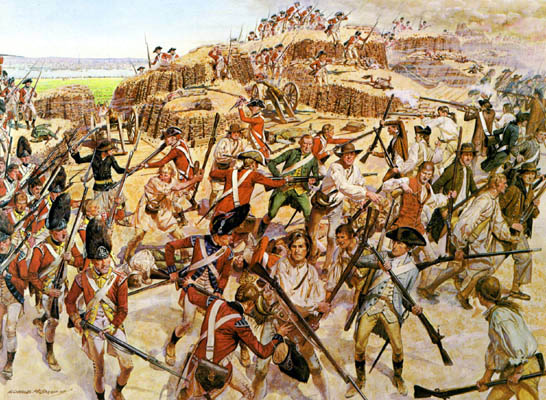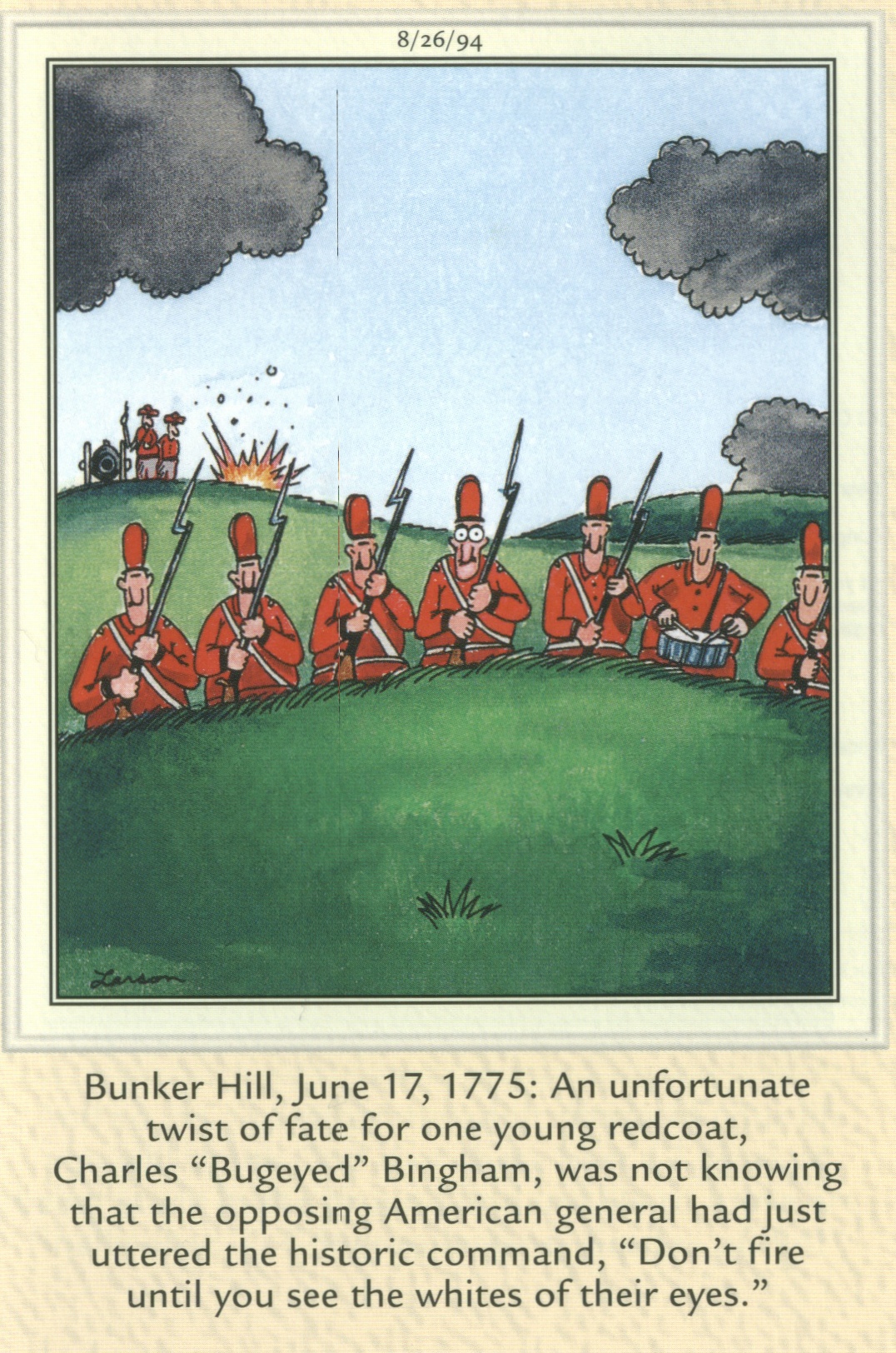Sometimes, a victory is more of a defeat and a loss is more of a victory. That’s the story of the Battle of Bunker Hill during the American Revolution.
To be as historically accurate as possible, most of the fighting actually took place on Breed’s Hill, but that’s not what’s important here. The chief significance of this battle is that an untrained, makeshift militia took on the disciplined British army and came away with greater confidence.
After the skirmish at Lexington and Concord in April 1775, Massachusetts militia surrounded Boston, intent on never allowing the British troops out again to ravage the countryside. British General Howe was just as determined to break the siege. Thus, on 17 June, Howe finally made repeated attempts to dislodge the colonial militia from the aforementioned hills.

Every time the British troops charged up the hill, they were met with a strong volley from those militia; they would retreat and charge again.

One of the weaknesses on the colonial side was a shortage of ammunition. The story handed down (hard to document) is that militia colonel William Prescott gave the following command in order to conserve ammunition: “Don’t fire until you see the whites of their eyes!” That command has become legendary, so much so that Far Side cartoonist Gary Larson gave us this classic, one that I like to use in my course on the American Revolution:

I love historical humor.
Due to the lack of ammunition, the British eventually took both hills, but the battle was a significant morale-booster for the inexperienced Americans. They continued to maintain the siege of Boston despite the loss.
Overall, in this battle, the British suffered 200 deaths and another 800 soldiers wounded; the colonists lost only 100, with 300 wounded. It was a Pyrrhic victory for the British, a type named after a Greek general who experienced “disastrous successes.” Gen. Howe lamented that his victory had been “too dearly bought.” Conversely, Nathaniel Greene, who would become one of the American heroes of the war, wished that his side could “sell them another hill at the same price.”
Today, there is a monument on Breed’s Hill that commemorates the battle. I’ve climbed to the top. In front of it is a statue of Joseph Warren, an ardent patriot leader who died in that battle.

It was shortly after the Battle of Bunker Hill that George Washington arrived to take over command of what he hoped would develop into the Continental Army. But that’s a post for another day.
